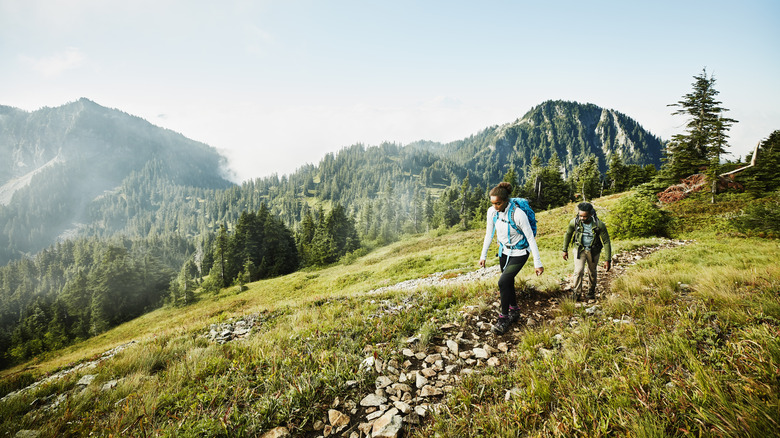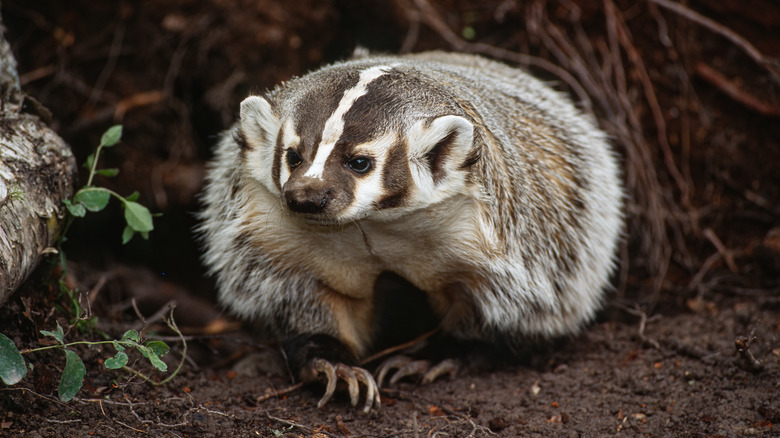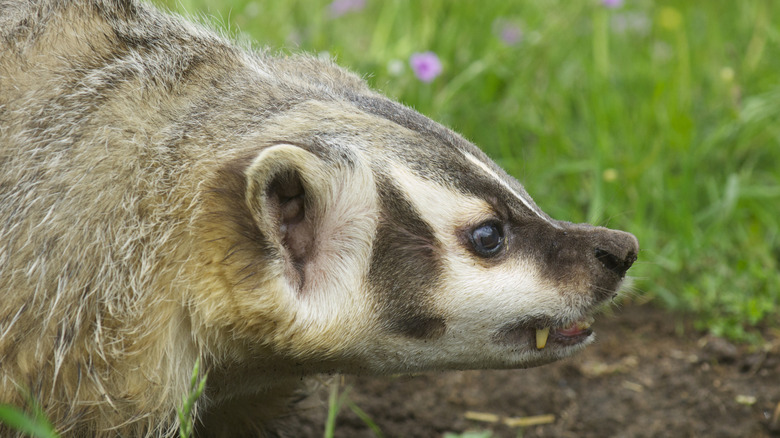The Adorable Wild Creature You Should Stay Very Cautious Of
With thick fur, brown eyes, and short, stubby legs, badgers can appear cuddly and cute at first glance. However, if you look more closely, you'll notice they also have a couple of more daunting features, such as long, sharp claws and formidable teeth. These observations alone are enough to indicate that this is one adorable wild creature you should be very cautious of.
While this combination has made it a popular mascot for various school teams, not a great deal is known about the elusive American badger other than it is one of those cute but dangerous animals you may encounter when adventuring throughout various parts of North America. However, what is known is where they are likely to be spotted, how they react to humans, why you should be cautious of them, and what you should do if you happen across a badger on one of your outdoor adventures.
Where American Badgers are found
The American badger is distributed over a wide and seemingly disparate swath of the United States. In fact, roughly two-thirds of the Lower 48 states have a population of badgers. Their range also extends into Southern Canada and Northern Mexico. Within the American badger's geographic distribution range is wide variety of topographic and natural features — desert, forest, mountains, grasslands, prairies, etc. The climatology also varies drastically from sub-freezing temperatures at times in their northern range to 100-plus-degree heat along the southern edges of their range.
The myriad locations, climates, and terrain in which they live is a testament to the adaptability of the badger. However, there is one feature that is found in every location badgers live -– dirt which can be easily dug. This is because much of the American badgers' activities take place underground. Badgers will have a series of burrows and dens for a variety of activities, including sleeping, food storage, and hunting its prey (mostly other burrowing creatures). According to the Nature Conservancy, badgers dig so much they may actually change dens daily.
Why you should be cautious of American Badgers
Badgers are wild animals. Like the vast majority of wild animals, they tend to shy away from human contact and are not typically aggressive towards people. However, if they feel threatened or are provoked, they can pose a threat. So, the best thing to do if you encounter a badger in the wild is to give it plenty of space. So long as it doesn't feel trapped or threatened, it will usually scurry off on its own.
However, even if it doesn't run off, you should never try to hold or handle a badger –- even if it looks to be sick or injured. If badgers feel threatened, they can attack. This typically would result in a bite or deep scratch or cut from its claws. Like all mammals, badgers can be rabid, which adds some extra need for caution.
Badgers also typically alert people and non-prey animals that they intend to attack before actually doing so. They may hiss or growl. It can even release a strong, skunk-like scent since it is a relative of the skunk. Domesticated animals can be trigger for this behavior as badgers may see them as a threat. So, even if you've trained your cat for hiking or happen to be adventuring in one of the national parks that allow dogs on hiking trails, be sure to keep them leashed as they can incite badgers to react more aggressively.


